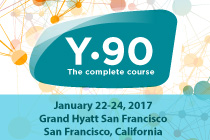Years of Expansion: 1985-1989
Expansion epitomized the Society's years between 1985-1990. During this time, the Society went from being a small, intimate club to a nationally recognized authority on interventional radiological procedures. The membership became more unified and better organized. One of the Society's programs on cardiovascular and interventional radiology was identified as being among the best of its kind in the U.S. Not only did this help increase the Society's overall membership, but it led to greater commercial sponsorship as well. As a result of this welcomed success, the Society was faced with a challenge of reexamining its basic structure and goals, and ultimately, deciding upon the best, most efficient way to manage its growth. Former Society President John Doppman, M.D. said this era depicted "the maturation of a small club of angiographers who were pioneers in the field, developing technology and flying by the seat of their pants."
1985
The Society held its annual meeting and course in Orlando, Florida. Registration for the course exceeded 300 professionals from throughout the U.S. The highlight of the annual meeting was a debate on how much, if at all, the Society should be allowed to grow in membership. Among the alternate solutions discussed were: maintaining the status quo; increasing in membership between 26 and 75; increasing membership to include all radiologists who have completed fellowship and practiced cardiovascular and interventional radiology fifty percent of the time as one category of membership; or enlarging membership to include all radiologists who had completed fellowships and practiced cardiovascular and interventional radiology fifty percent of the time as two categories of membership. The consensus of the membership was to expand and include all qualified applicants.
The Charles T Dotter, MD, Lecture, which had been established the previous year, was endowed with a $25,000 gift by William Cook of Cook, Inc. The first lecture was given by Dr. Dotter's close friend, Professor Eberhard Zeitler of Nuremberg, West Germany.
1986
This year's annual meeting and course were held in Fort Lauderdale, Florida. More than 350 professionals representing all regions of the U.S. attended. Once again, membership was the focus of discussion at the gathering. Society President Charles Tegtmeyer, MD announced the appointment of two groups to explore the benefits of continued expansion and the most efficient way to manage anticipated growth. There were currently 108 members. Also, a brief discussion on whether to change the Society's name from "Society of Cardiovascular and Interventional Radiology" Cardiovascular and Interventional Radiology" to the "Society of Cardiovascular and/or Interventional Radiology" was discussed. No change was made. However, those present did agree that Society members were angiographers who do interventional radiology rather than interventional radiologists.
1987
Membership increased dramatically to 532, including 113 Fellows. This year marked a turning point for SCVIR. The new membership criteria were a source of debate, and estimates in projected membership growth ranged from 700 to 900. Other issues debated were establishing a new organizational structure and developing new funding methods. SCVIR contracted with the American College of Radiology for organizational management services. Funding to date had been generated by course tuition and exhibit fees. With the tremendous increase in members, it was necessary to establish membership dues, which were set at $250 per year.
1988
Under its new management agreement, the Society obtained its first staff, which included one full time and one part time staff member. SCVIR's membership increased to 747. A special committee was created to examine the issue of journal affiliation, and SCVIR agreed to align itself with "Radiology," a widely respected professional publication whose editor was a member of the Society.
The Society continued to review its criteria for accepting members. After much debate, a "by-invitation" policy was adopted that would allow for inclusion of individuals from various backgrounds that did not meet the already-established criteria for membership. This was a major shift in thinking from past years.
The Society's course in cardiovascular and interventional radiology continued to receive accolades from throughout the U.S. Increased corporate interest in exhibiting at the event proved one example of this growing interest.
1989
The Society's annual meeting and course moved back to San Diego, California. The Society initiated a special series of Radiology titled "RSNA-SCVIR". All contents of the issue pertained to cardiovascular and interventional radiology and included abstracts from the SCVIR's annual meeting. Dr. Gary Becker served as editor.
Thanks to insightful leadership, SCVIR is well established and poised for the challenges of 90s health care.
Source: History of the Society of Cardiovascular Radiology by Dr. Andrew Crummy
Published in: SCVIR News - November/December 1997











